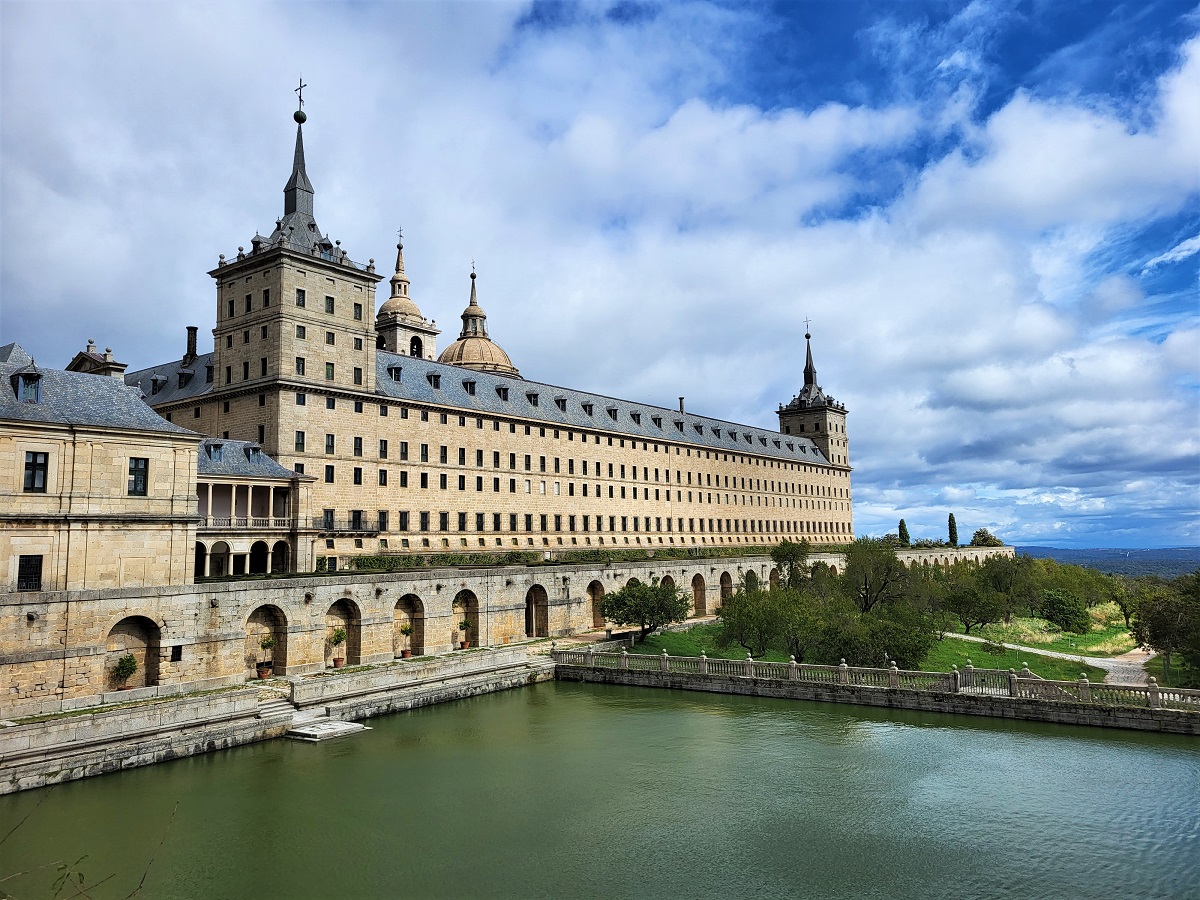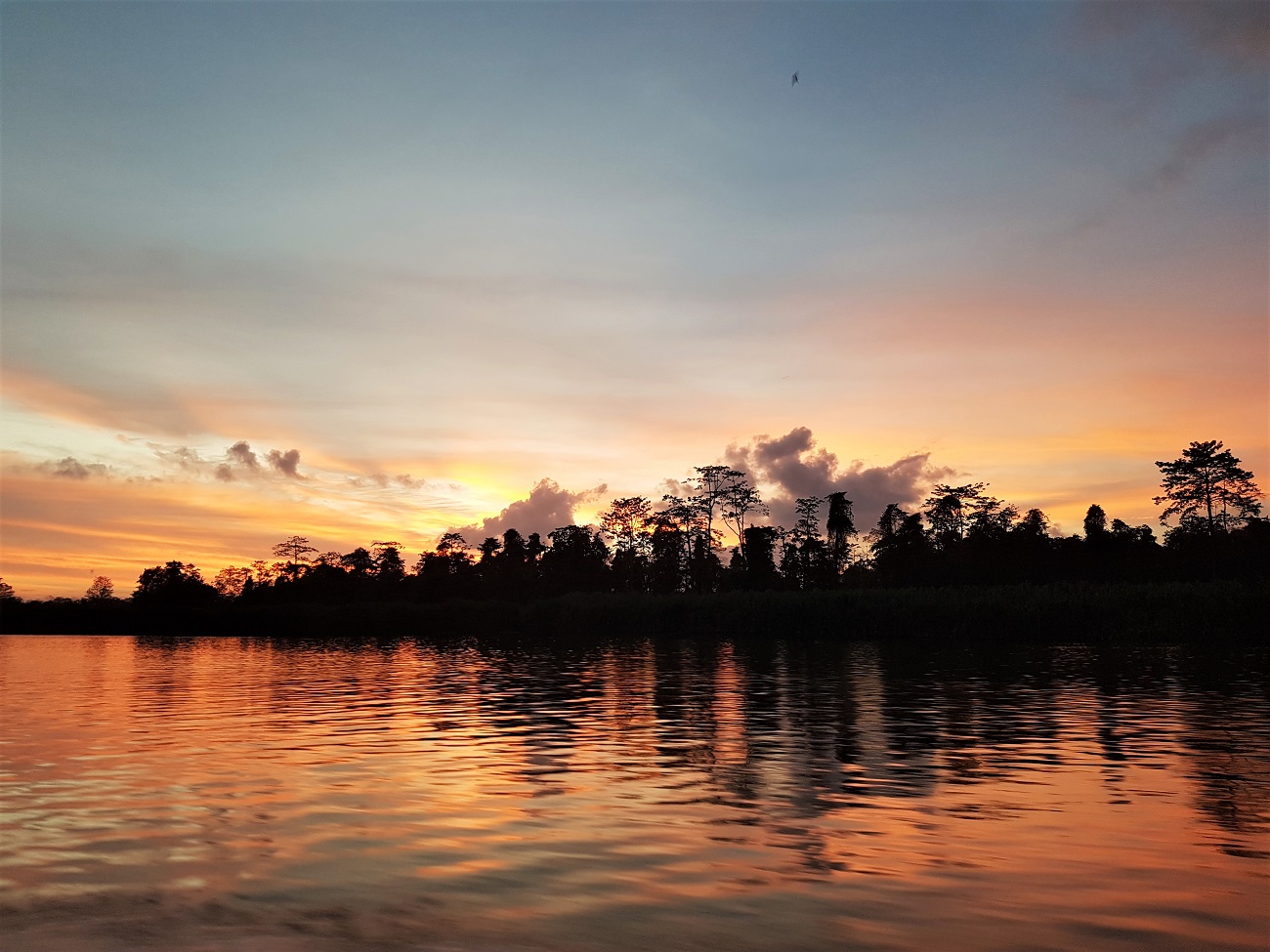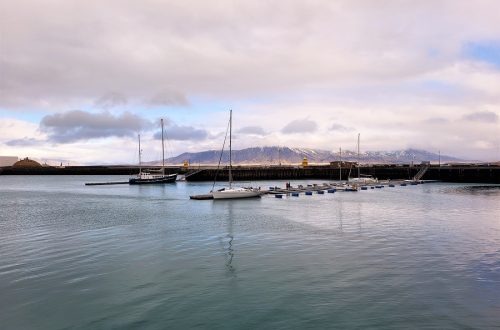At the foot of the Sierra de Guaderrama mountains, to the west of Madrid, lies the magnificent monastery of El Escorial, or San Lorenzo de El Escorial to give it its full name.
Built by Felipe II between 1563 and 1584, the monastery was designed to house the remains of the Spanish royal family and over the centuries, countless members have been entombed within its gargantuan walls.
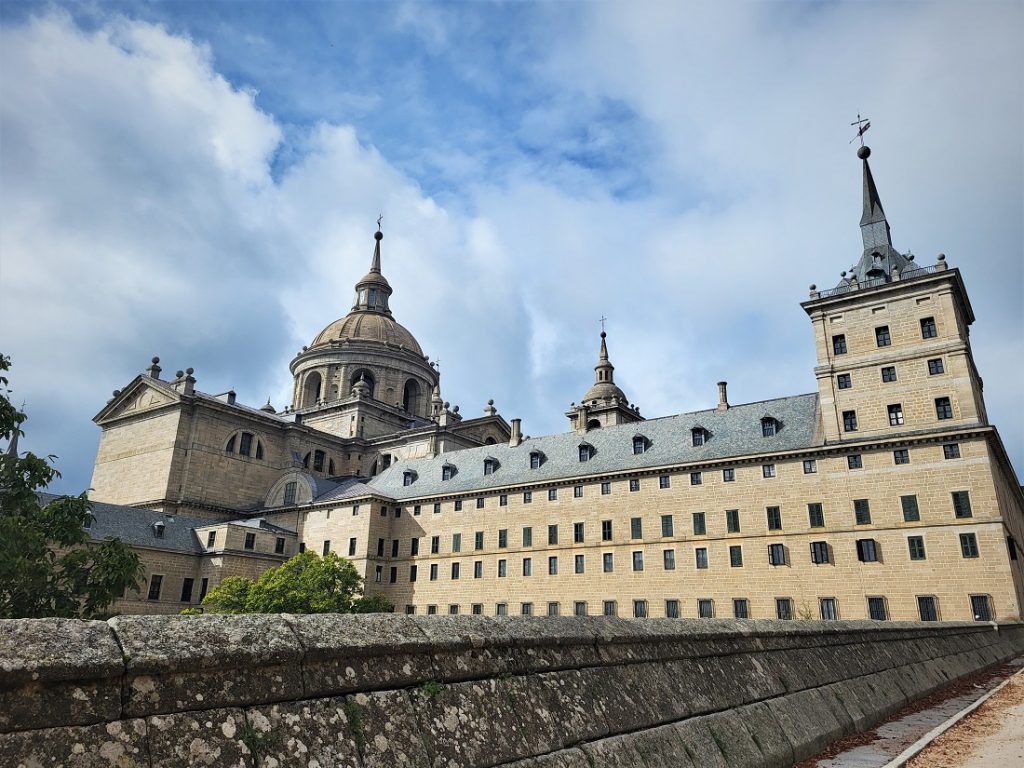
Severe, austere and imposing, El Escorial is part-monastery, part-palace and quite unlike any palace I’ve been to – for at times, it feels like a giant tomb.
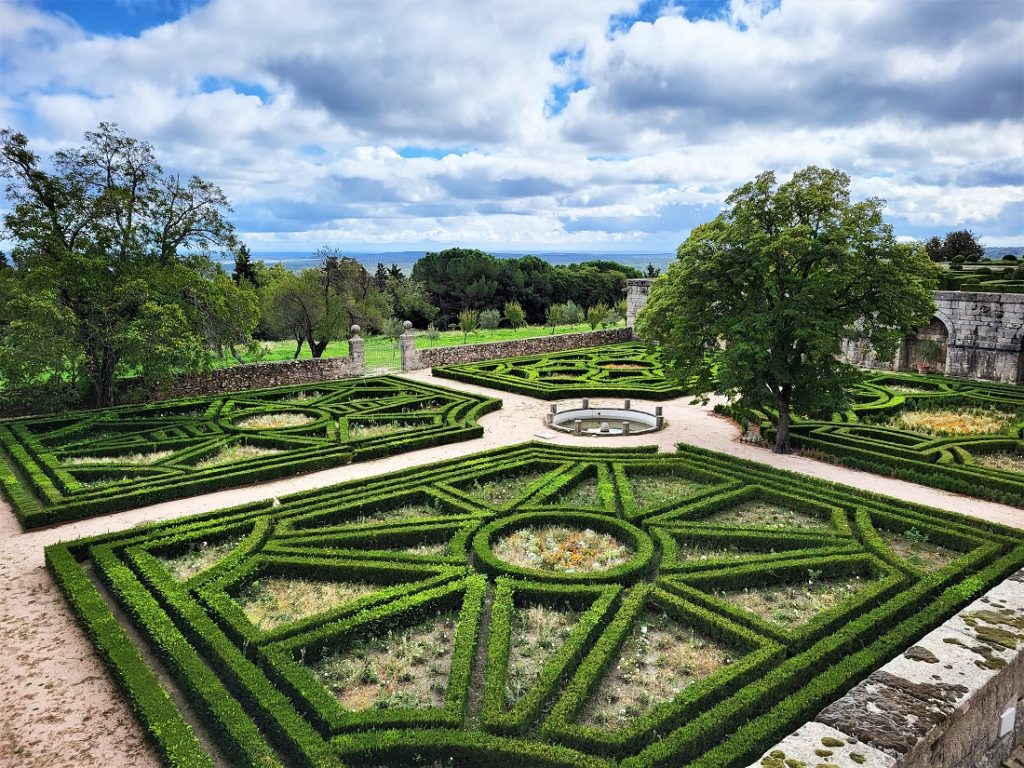
The huge fortress-like structure is laid out in a gridiron pattern (in honour of St Lawrence who was burned alive on a grill) with an enormous church at its heart, and is surrounded by attractive, formal gardens (above).
The sublime complex was designated a UNESCO World Heritage Site in 1984.
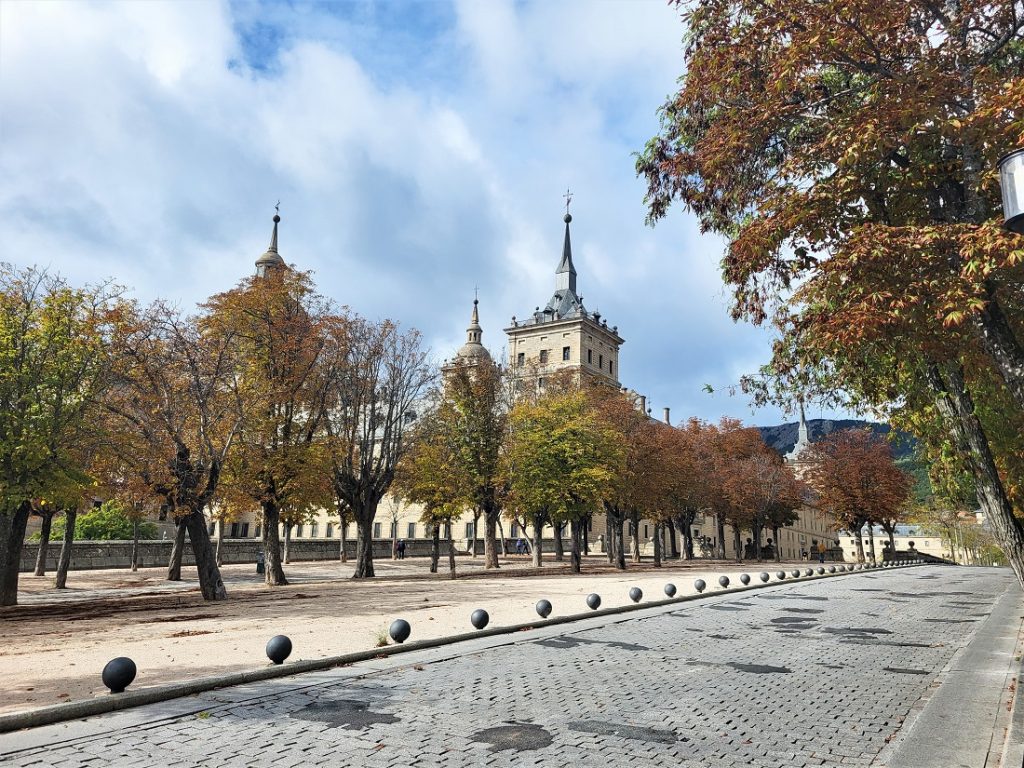
After catching a bus to El Escorial from Madrid, I alighted at the bus station and strolled through the town’s attractive streets in the direction of the monastery.
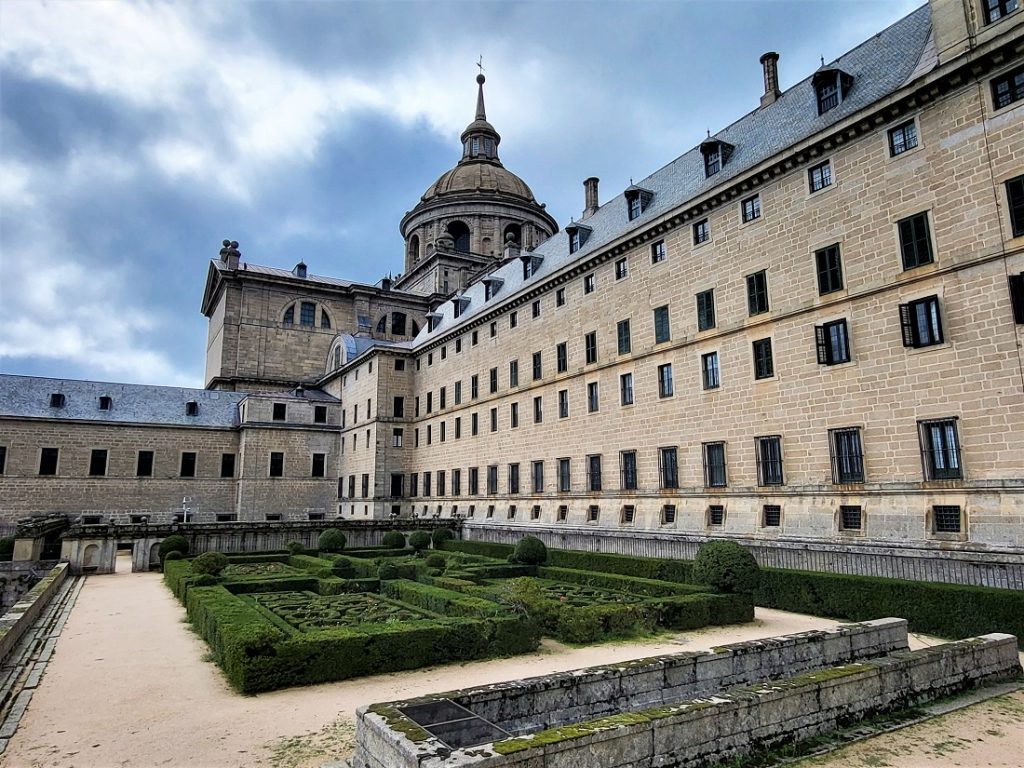
As I approached the palace, I stopped to take a look at it from a small viewing platform (above), before going inside to explore the complex. Photos aren’t allowed inside.
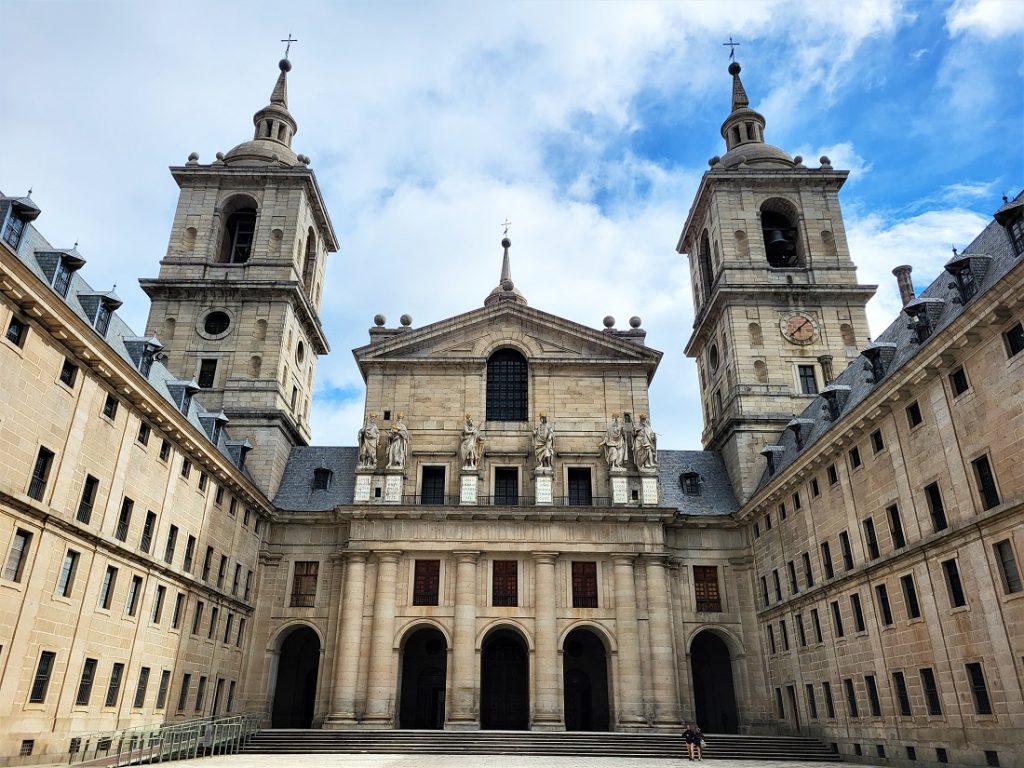
I started my tour in the impressive basilica, which is decorated with marble and gold, filled with paintings and boasts a huge, eye-catching altarpiece.
I then made my way to the cloisters (below) and the chapel, where artworks by the likes of El Greco are on display, alongside a painting by Titian that Felipe II commissioned, but didn’t like.

From there, I found myself in the royal tombs and I wish I could have taken some photos, as they’re quite something to behold and it’s one of the most impressive mausoleums I’ve ever seen.
The Hapsburg mausoleum is made up of a series of white marble chambers packed with tombs, mostly belonging to minor royal wives and children – it’s a stunning display of devotion to the family’s lost loved ones.
The mausoleum culminates at the foot of a striking red and black marble staircase in a round room lined with the tombs of various Spanish monarchs.
It’s an astonishing sight and a suitably opulent resting place for so many kings and queens.
From the mausoleum, I made my way to the austere Hapsburg Palace, which is decorated simply with plain white walls, red tiled floors and wooden furniture. And isn’t at all in keeping with the lavish royal residences I’d seen in central Madrid and Aranjuez.
This part of the palace begins with the rooms of Felipe II and ends with those of his favourite daughter, the Infanta Isabella Clara Eugenia.
The tour then moves on to the Hall of Battles, an enormously long corridor depicting various battles, such as the 1431 Battle of La Higuerela, painted by Genoese artists in the 1590s.
The room, which also features a painted vaulted ceiling, was known as the Queen’s Gallery in the 16th century and is an arresting sight.
The Hall of Battles leads onto the Bourbon part of the palace, which is much more reminiscent of the other Spanish palaces I’d visited.
Boasting chandeliers, gilding, marble and lots of tapestries, it’s much showier than the Hapsburg Palace, although the rooms were still quite bare and there wasn’t much in the way of furniture – just some tables, chairs, clocks and vases.
From the Bourbon Palace, I made my way down the Villabuena Staircase, where the tour ends.
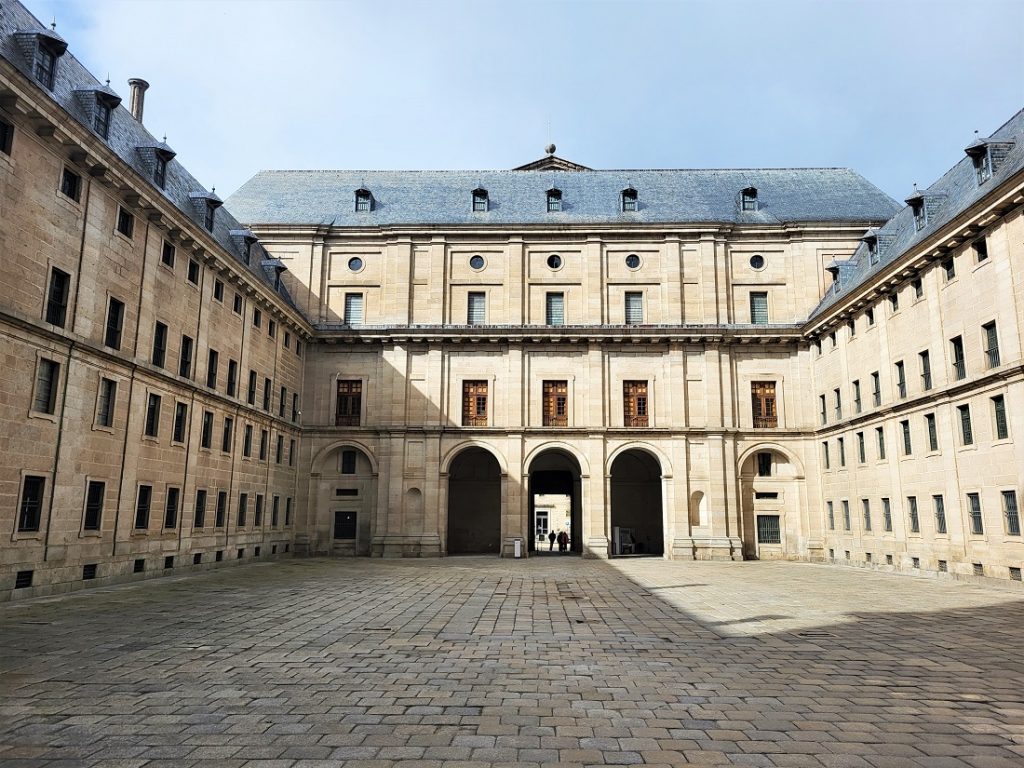
Before leaving El Escorial, I retraced my steps back towards the basilica and crossed the courtyard to the Royal Library (above), which I’d realised I’d missed earlier.
The wonderful library is situated atop a series of flights of stairs and well worth the climb.
Once home to some 40,000 books, the library is lined with wooden bookcases and boasts a 16th century barrel-vaulted ceiling painted with religious scenes.
In the centre of the room, numerous globes, books and manuscripts are on display.
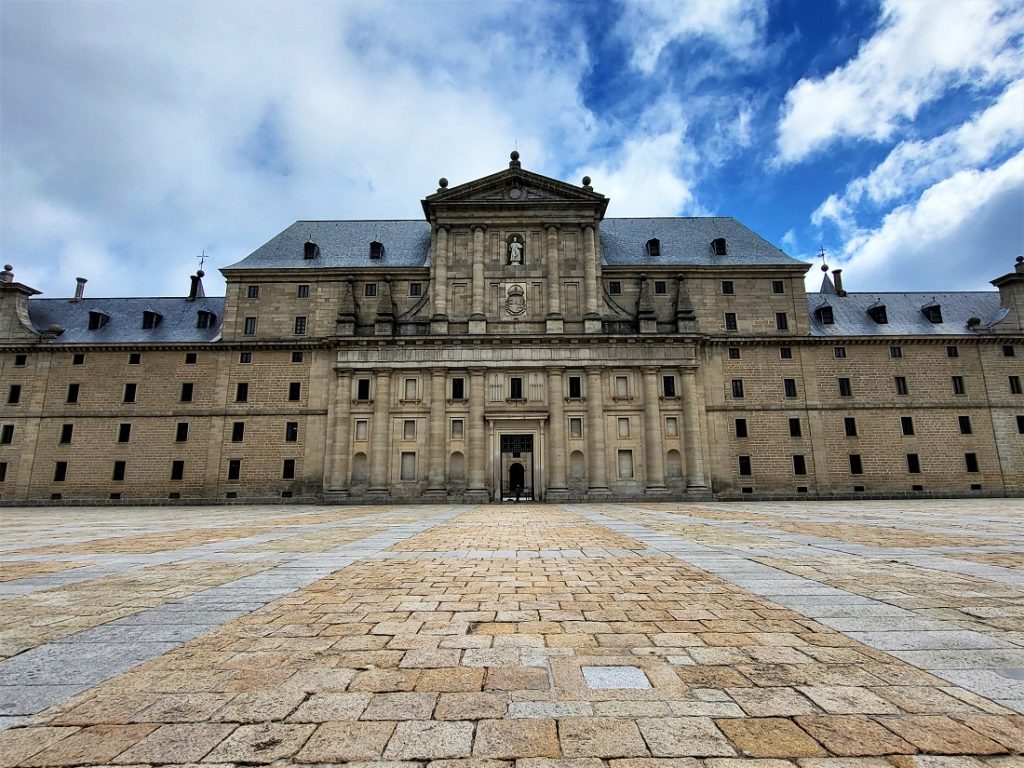
I’d been keen to visit the gardens after looking around the palace, but sadly they were closed because of the weather (it was very windy the day I visited and the gusts were so strong I was having trouble staying on my feet).
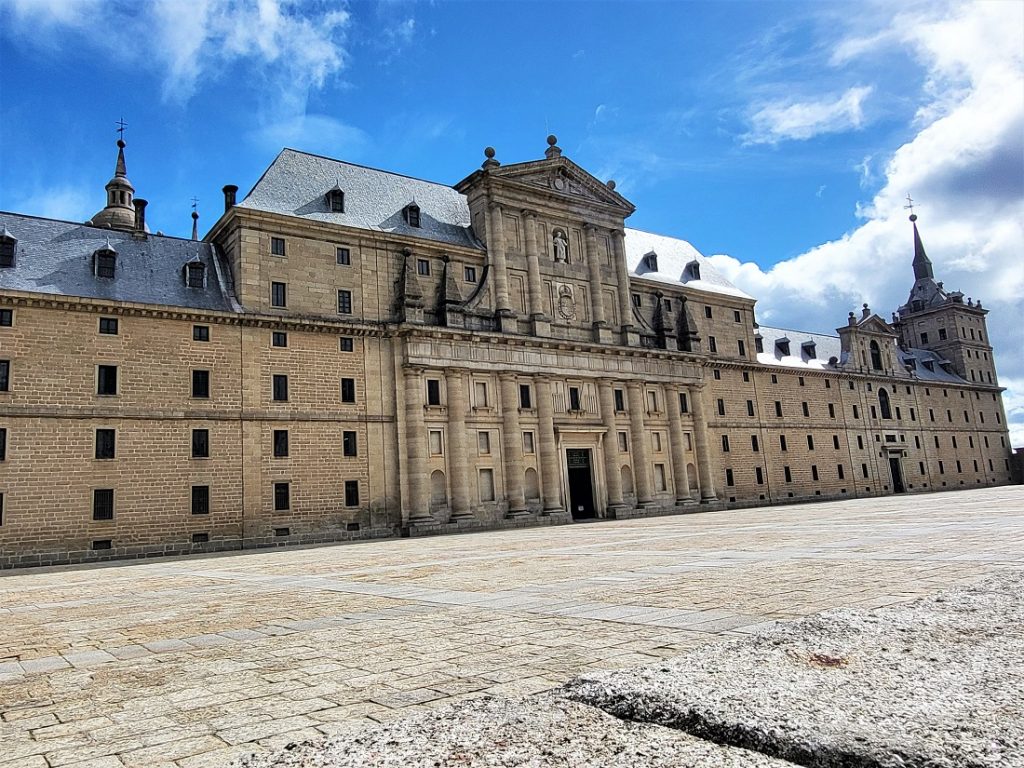
Instead I spent a little while photographing the monastery from every conceivable angle, before making my way back to the bus station to catch the bus back to Madrid.
I enjoyed my visit to El Escorial, it’s an extraordinary monument and thanks to its mausoleum and austere décor, it’s a remarkably unusual affair.
Its one of the world’s great royal residences and is a must-see for anyone visiting Madrid who likes palaces.
Info
- To get to El Escorial from Madrid, you’ll need to catch the metro to Moncloa and hop on the bus to El Escorial, which leaves from Isla 1.
- You can buy your ticket from the driver on the bus – last October it cost €4.20.

